Contents
Against the background of the chicken population walking around the villages, the native of the North American continent, the turkey, is completely lost. The low popularity of turkeys as poultry is most likely due to the low egg production of turkeys (120 eggs per year is considered a good result) and the long growing periods of turkeys.
With the exception of broilers, the rest of the turkeys take about six months to reach marketable weight. Broiler meat crosses of turkeys, like broiler chickens, grow up in 3 months.
In addition, many owners of personal farmsteads believe that keeping turkeys is fraught with significant difficulties. In fact, this is both true and not true.
Keeping turkeys at home is generally no more difficult than keeping chickens. True, it must be borne in mind that the area for keeping one turkey is much larger.
Usually, when they are going to have a bird, they do not buy adults, but an egg for an incubator or chicks. Having no experience in breeding turkey eggs, it is better to buy turkey poults.
Growing turkeys at home
It is generally accepted that turkey poults are very capricious in rearing and often die at a very young age. This is also one of the reasons why poultry farmers are reluctant to start breeding turkeys at home.
In fact, the problem lies not in the effeminacy of turkey poults, but … in industrial incubator complexes. Unfortunately, infections are constantly walking in these giant incubators. Epizootics sometimes take such forms that the import of chicks from the country that spreads the infection is closed at the state level. Experienced goose breeders, for example, indicate that when buying goslings from a large complex, up to 60% of young goslings from beginners die from viral enteritis in the first three weeks of life.
Hatchery poults have similar problems. Often, the entire purchased batch can die out. From infection. At the same time, the survival rate of home-grown uninfected turkey poults is almost one hundred percent with minimal attention to them. Those that do die are doubtful even when they hatch from the egg, since they clearly hatch too early and a very large undigested yolk is noticeable in the egg. Such a turkey is very likely to die.
The second reason for the death of hatchery turkey poults is the conviction of private traders that in the first days of life, young chickens (of any kind) must be given eggs and boiled millet. Today, there are ready-made feeds for young chickens, turkeys and others, which contain the amount of protein, carbohydrates, vitamins and minerals necessary for chicks in the first days of life.
At the complex, no one will cook millet with eggs for hatched turkey poults and then rub them. They will give you special food. When a private trader, according to the precepts of experienced chicken breeders, begins to shove millet with an egg into a turkey, a turkey unaccustomed to such food will get gastrointestinal upset, diarrhea and, as a result, death.
Therefore, when purchasing even reared turkeys (this option is better than daily allowance) from private hands, you need to ask what the previous owners fed the bird, and, if necessary, change the diet, gradually adding a new type of feed. When purchasing turkey poults on a large farm, it is better to be puzzled in advance by buying special feed for young animals. It is almost certain that such food was given in such a farm.
And the third reason may be a long hunger strike of poults bought by daily allowances. On the first day, freshly hatched chicks of any bird do not eat anything, they have not yet absorbed all the yolk. On the second day they should already be able to peck. Moreover, if on the second day the turkey poults still eat very little, then from the third and further, only have time to add food.
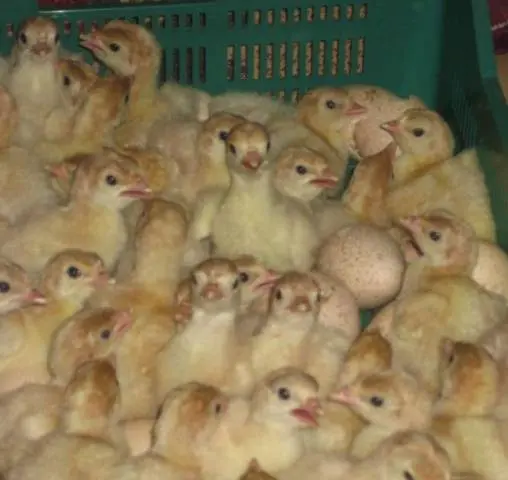
Breeding turkeys at home
For beginners, this is not such a difficult problem, as many information resources often try to present it. The real problem is hereditary deformities due to inbreeding when breeding heavy breeds of turkeys, diseases introduced from the hatchery and the large weight of turkeys that have been made too high perches.

Turkeys tolerate cold weather very well, even if it rains with hail. At a temperature of +5 (according to the sensations due to wind and rain – minus 5), turkeys do well even without a canopy. If the turkey has not yet clipped its wings, then it will generally not notice bad weather. But turkeys fly very well, if given the opportunity. Yes, looks are deceiving. With clipped wings, a turkey cannot cushion its landing and injures its legs upon landing.
At the same time, one should not expect that turkeys are able to spend the night on the street at real sub-zero temperatures. If there are frosts in the region in winter, then turkeys need an insulated barn. When equipping a shelter, it is necessary to take into account the size of the turkeys. Although the principles of the turkey house are the same as the chicken coop, the area should be much larger.

Turkeys can be kept with other poultry. Despite its formidable appearance, the turkey is a peaceful creature. They either fight with relatives for turkeys, or drive away strangers from a turkey sitting on a nest. In all other cases, the turkey prefers not to provoke conflicts.
Turkeys are excellent mothers and sit well on the nest. Admittedly, not without a bit of a twist. If a turkey decides that it will nest “here”, then it will nest “here”. And knocking a turkey off this thought is almost impossible. Even bathing the turkey in a tub of cold water doesn’t help much. So it’s easier to put up with it and let the turkey sit out (or not sit out) the masonry where it decided to rush.
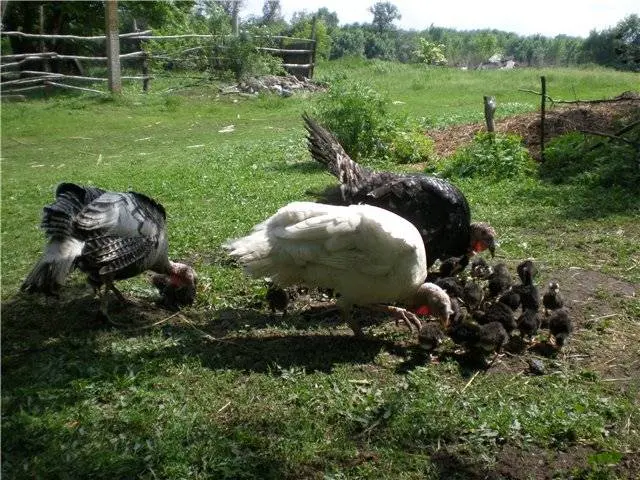
There is an opportunity to correct this moment. Turkeys prefer to hatch turkeys in secluded places. Given the choice between a hidden nook and an open box of straw, the turkey will choose the nook.
If you equip a sufficient number of shelters, turkeys are very likely to lay their eggs there.
Beginners usually start breeding turkeys by buying turkeys and rearing them.
How to raise turkeys
If fledged turkey poults were purchased, you can release them into the aviary. It is better to find out how they were fed by the previous owner and first copy the diet, and then transfer them to their feed.
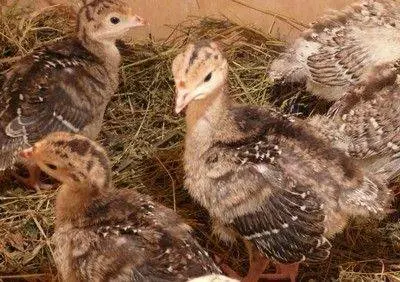
Daily poults are first placed in brooders or improvised containers in which it is possible to maintain a high air temperature.
Beginning poultry farmers usually do not yet have either incubators or brooders. In the summer, even such a box may come up.
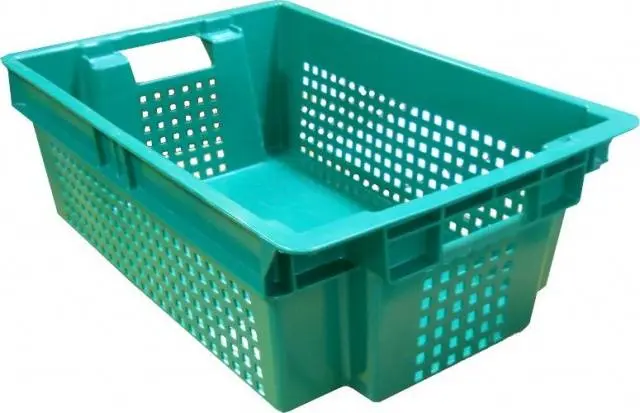
Bedding is placed at the bottom: sawdust, straw, hay.
A stick of suitable length is placed on top, on which the wire from the heating lamp is wound. A 40-watt lamp will be enough for heating, but an old-style lamp is needed, that is, an ordinary incandescent bulb.
It is usually recommended to maintain a temperature of about 30-33 degrees, in fact, 28 is enough. Without a thermometer, you can choose the desired temperature by simply lowering and raising the lamp.
You need to focus on the behavior of the turkeys and the lamp itself. The indicated 40 watts can heat the glass so that it burns, or it can so that the lamp can be safely held with a bare hand. Therefore, we look at the Indians.
If they huddle together, try to crawl into the middle of the herd and squeak, then they are cold. The lamp is lowered lower or changed to a more powerful one.
If the turkeys are huddled next to / under the lamp, but sleep peacefully, then the temperature regime suits them.
If the turkey poults are located at some distance from the lamp and sit quietly, many are sleeping, it means that they are already too hot under the lamp, and the lamp can be raised higher or changed to a less powerful one.
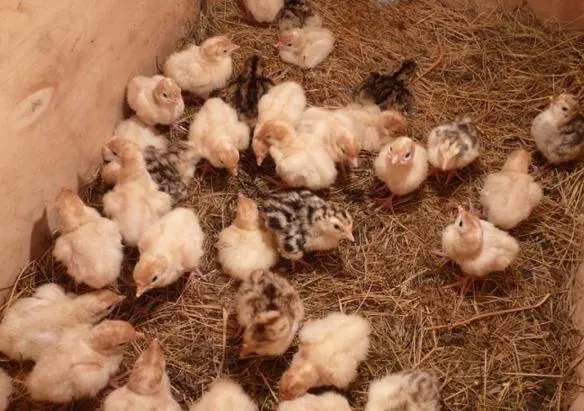
But at the same time, the box must be covered from above so that the heat does not go away. Therefore, ventilation holes must be cut in the box.
Feeding turkeys from day one
The best and simplest is a special feed for turkeys, in which everything is added. By the way, given that all the ingredients in it are ground into dust, and then re-compressed into grains, when feeding with such food, sand is not even required.
No need to pour food just on the bottom of the box. Feed is poured into a shallow and low container. The turkeys themselves will find it perfectly on the second day.
Feeding and features of turkeys
If there is no opportunity to buy such food, then you will have to feed it the old fashioned way, adding a grated boiled egg for the first week. The number of eggs will largely depend on the number of poults and the financial viability of the owners.
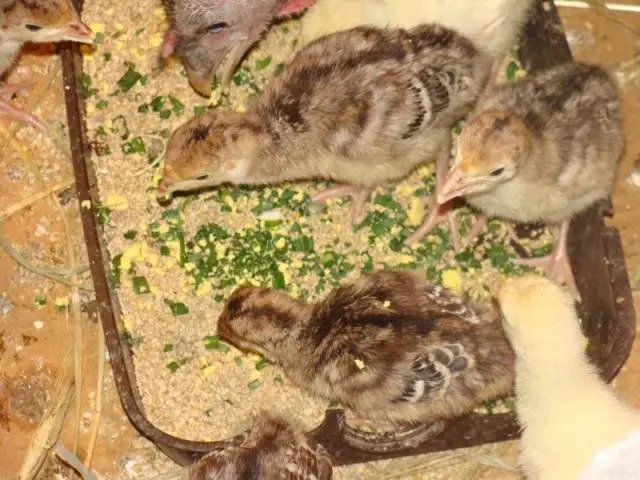
In addition to eggs, they give finely ground wheat, barley, and oats. But finely ground, not flour. Sand must be placed in a separate bowl. Ground boiled egg shells are poured into the cereal. After a week, you can gradually add finely chopped greens, including vegetables and ordinary grass.
In addition to cereals, turkeys can be given soaked bran and tear. But in this case, it is necessary to ensure that these feeds do not turn sour in the heat, since they have a high fermentation ability. Soak these types of feed immediately before giving. Feed should not be liquid.
It is also essential to have clean water. Water can also be placed simply in a container low enough for the poults to drink, and high enough so that they cannot climb into it by simply moving around the box.
The bottoms of cut one and a half, two-liter bottles are well suited as such containers. But some kind of weighting agent must be put on the bottom of the water container so that the turkey poults do not knock it over. A weighting agent at the bottom of the water container is also necessary so that a turkey chick that accidentally gets into it can jump out without any problems. A heavily soaked turkey can die from hypothermia.
Such a density is unacceptable if you need to save the entire livestock, and not lose 25 percent.
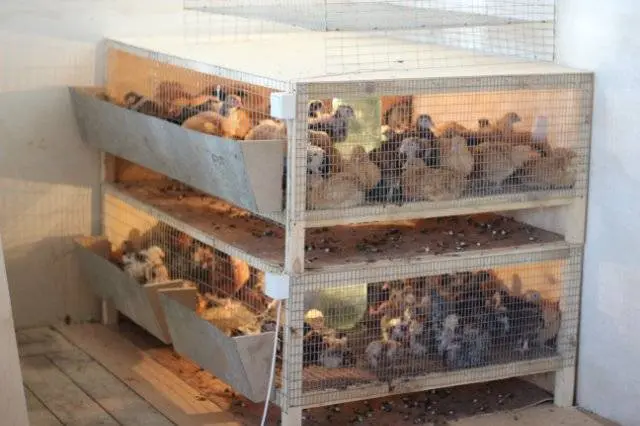
At this density, especially when we are talking about poults younger than a week old, weak poults can be trampled by stronger ones when they lie down to rest.
In addition, for normal development, turkey poults must move a lot. Otherwise, turkeys will inevitably have problems with their legs.
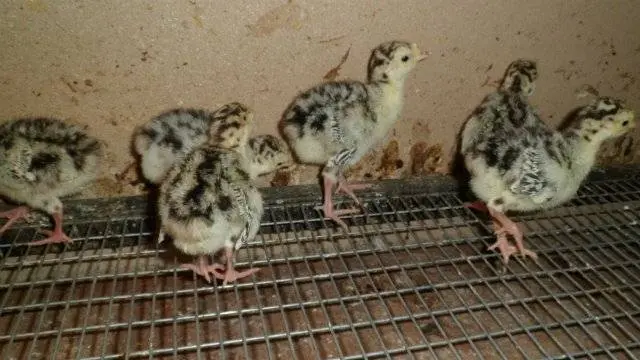
But it is better if turkeys from birth have the opportunity to move a lot. It’s good when turkey poults huddled together occupy only one corner of the area allotted to them. As the turkeys grow up, they need to be seated or transferred to a more spacious area.
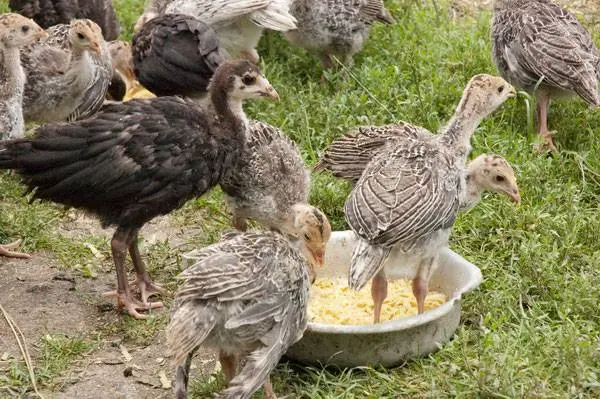
Details about breeding turkeys at home
Puberty in turkeys occurs at 10 months. Therefore, turkey poults bought at the beginning of summer are already quite capable of breeding in the spring. 8-10 turkeys are left for one turkey. A higher number is not recommended as the turkey will not be able to properly inseminate all turkeys.
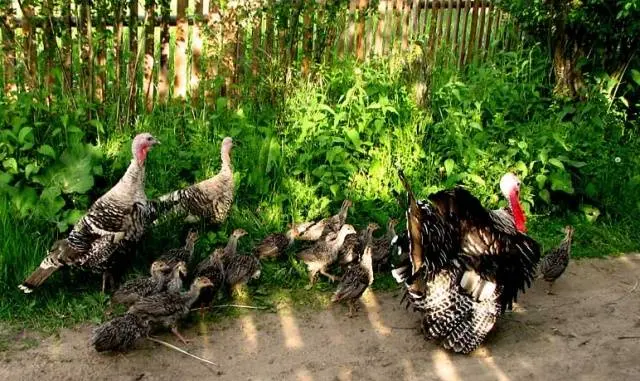
If turkeys are not kept on an industrial scale, but simply as an additional source of meat in the backyard, at least 3-4 turkeys should be allocated to the turkey.
When a turkey decides on a place where she will nest, she begins to lay her eggs directly on the bare ground. The turkey lays one egg a day. There is no need to worry about bare ground. Together with the eggs, a nest appears there quite imperceptibly, often made up of what the turkey could find. Therefore, provide the turkeys with straw scattered around the aviary. A nest of turkey straw will be assembled by yourself.
Having laid 25-28 eggs, the turkey sits down to incubate them. The turkey sits on the nest very tightly, often without even going to peck the food. If the turkeys were fed well enough before and the turkey has some fat reserves (the turkey should not be obese), then there is nothing to worry about. In the first days of incubation, the turkey usually calmly leaves the nest. The turkey stops leaving the nest already in the last days before the hatching of the turkey poults.
The turkey incubates for 28 days. After that, you can decide whether to pick up the turkeys and grow them by hand, or leave them with the turkey. In the second case, the turkey with turkey poults must be provided with appropriate feed and ensure that it is not eaten by other birds.
How to raise turkeys in a household incubator
Turkey poults can also be bred in a household incubator if a decision has been made not to leave eggs under the turkey or a hatchery egg has been purchased. Also, as a rule, hatchery-raised turkeys do not have a brooding instinct, so it is possible that hatchery turkeys will not incubate eggs either.
For laying in the incubator, eggs are selected that have been stored for no more than 10 days. Eggs should be clean, but not washed. Eggs are stored at a temperature of 12 degrees and a humidity of 80% with a blunt end up. The eggs are turned every 4 days.
Before laying, the egg shells are cleaned of debris, they wait until the eggs warm up to room temperature, and are dipped in a disinfectant solution. After that, the eggs are checked with an ovoscope.
The yolk of a quality egg does not have clear boundaries, the protein is transparent, and the air chamber is located at the blunt end of the egg. Such eggs can be used for incubation.
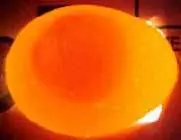
Due to the speckled coloration and the thicker turkey egg skin, visibility will be poorer, but the essentials can be seen.
The second time turkey eggs are ovoscoped 8 days after laying. And for the third time on the 26th day.
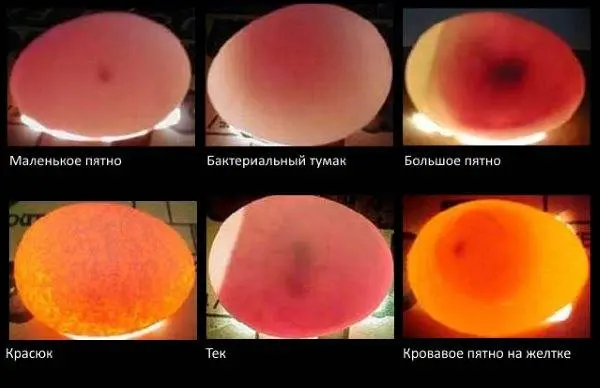
In the presence of any of these defects, the egg is removed from the incubator.
Candling at home:
Stages of incubation of turkey eggs
1-8 days:
- temperature 37,5 — 38°;
- humidity – 60 – 65%;
- the number of egg turns is 6 per day.
8 – 14 day:
- temperature 37,5 — 38°;
- humidity – 45 – 50%;
- the number of egg turns is 6 per day.
15 – 25 day:
- temperature 37,5°;
- humidity – 65%;
- the number of egg turns – 4 per day;
- cooling eggs – 10-15 minutes, at the end, when you touch the eyelid, neither cold nor heat should be felt from the egg.
25 – 28 days: eggs do not disturb until hatching turkeys.
Hatching will begin with small pecks of the egg shell. In this position, the eggs can be up to a day. Do not try to help the turkeys open the egg. Having gained strength, the turkey poults will open the egg shell themselves and get out of it. If you “help” them, it may turn out that the turkeys are not yet sufficiently developed and there is too much yolk in the egg. When the egg shell is opened, the yolk will dry out, the turkey will not have time to develop to a viable state and will die.
Ovoscope with own hands
A primitive egg ovoscope can be made independently from an ordinary lamp and some kind of box. For example, from under shoes. But the eggs in this case will shine through worse, since the lamp in the factory ovoscope is more powerful.
A hole is cut in the lid of the box according to the size of the egg, a switched-on lamp is placed inside the box and the lid is tightly closed. To be able to close the lid, a slot is cut for the wire in the side wall of the box.
It is better to ovoscope the eggs in complete darkness so that you can see better.
Conclusion
As a result, there is no need to be afraid to start and breed turkeys. Keeping turkeys is more difficult only in terms of the amount of feed and the money spent on feed. But the yield of meat is very high. Broiler turkeys produce even more meat, but require significantly more feed. And it is better to feed such turkeys with compound feed for broilers.










Шахри хисор
Дехаи олигархии
Swak vertaling na Afrikaans